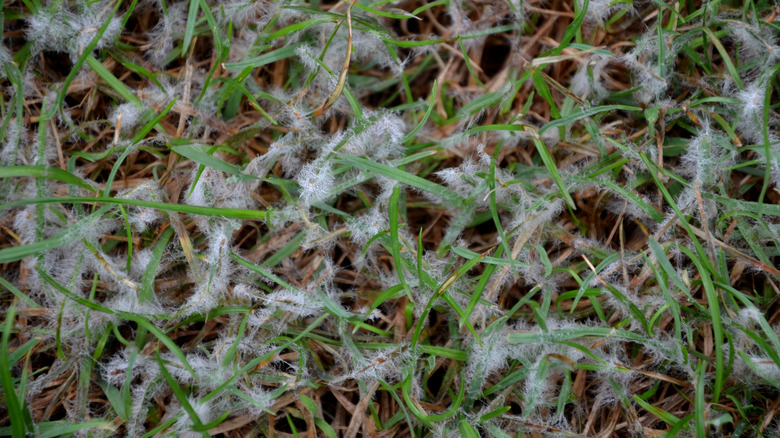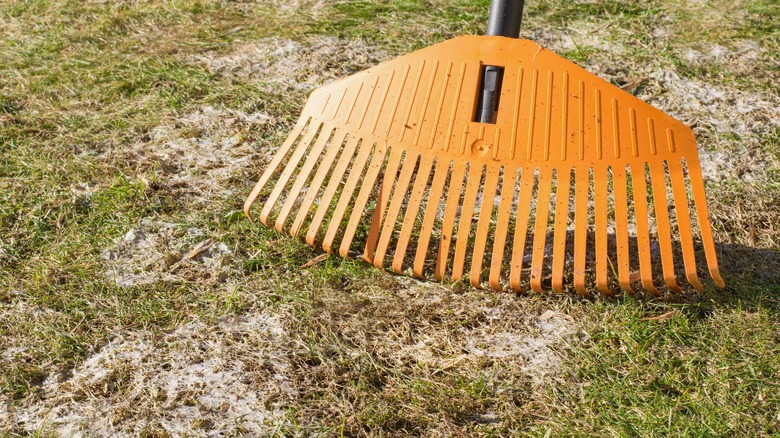You Can't Skip This Crucial Lawn Care Step If You Don't Want Snow Mold
Tending to and caring for your lawn can be a difficult task that includes a lot of backbreaking work, from mowing and raking to giving your turf the right fertilizer to keep it growing healthy and green. However, even if you do everything right, you can still have the misfortune of experiencing one of the most irritating problems — turf fungal disease. While some fungal diseases (like brown patch or rust) can be battled by watering your yard at the right time of day, snow mold can be a little more difficult to prevent. This is because snow mold forms just as the last snow of winter melts creating an excess of moisture and water on your lawn. While snow mold is hard to prevent, it also can't be irradiated using fungicide. The only successful treatment for a snow mold infection is time and prevention.
Luckily, there's an easy way to prevent snow mold and all you have to do is simply rake all the dead wet leaves off of your lawn in early spring once the last snow has melted. If you do this, you won't have to deal with that annoying fuzzy pinkish-white mold again. This works because removing leftover dead leaves or other clutter from on top of your lawn helps it dry out faster.
Why raking in spring makes such a difference
Raking up all the leftover dead leaves or other clutter from on top of your grass in spring is important because it will create more exposure to air and sunlight for your lawn. This means that there will be no place for moisture to build up and start forming fungus. While many modern gardeners advocate for the idea of leaving dead leaves on top of your lawn so that they break down and add important nutrients to the soil, snow mold is one of the reasons why it's bad to keep leaves on your grass as they can create the perfect environment of cold and wet darkness for the disease to take hold.
Therefore, if your lawn is prone to fungal diseases, it is important to grab the rake come spring and get to work. However, be careful that you don't start raking too aggressively because raking turf while it is still dormant can easily pull the grass out by the roots and cause further damage. Normally, when raking in the spring, you want to use a gentle plastic rake over a metal one.

